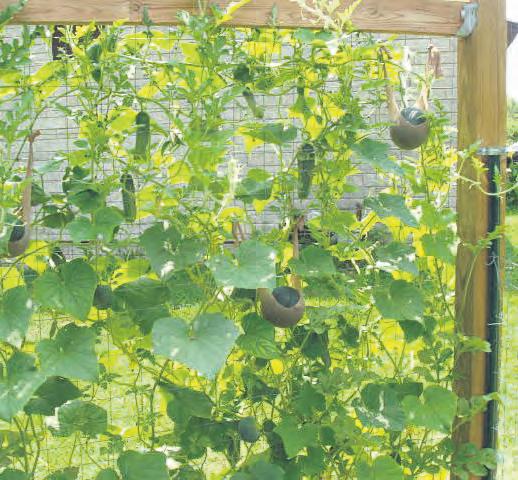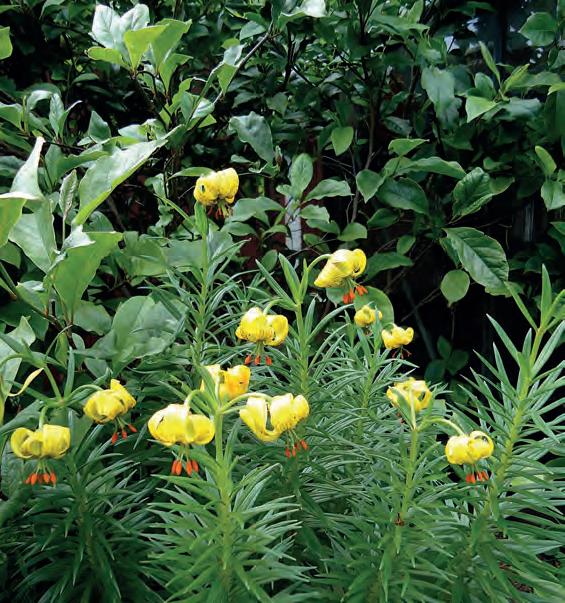
19 minute read
of work to be done
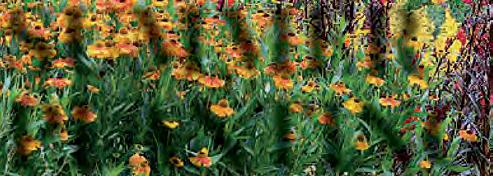
SUMMER PLANTING
Advertisement
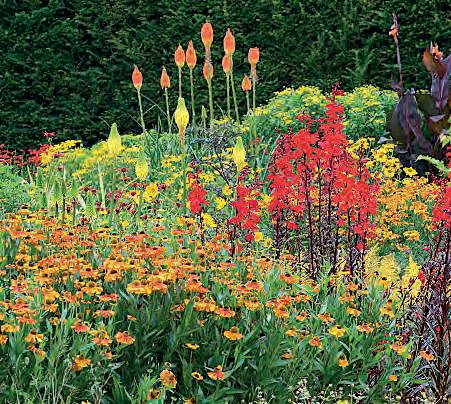
The start of high summer and hopefully warm weather and the ideal time of year to be planting so how should you deal with purchases at this time of the year
The months of June and July are often dry and warm, and aren’t the best time for planting. The soil can be unforgiving and it’s easy to lose plants. But that shouldn’t stop you from buying and adding things into your garden and there are a few practical steps you can take to make sure anything you buy in summer thrive and add instant attraction – or be ready in place for the following year. In the hot weather your plants will be needing plenty of water so make sure that you are saving all your ‘grey’ water (old wash water etc.) and water either early in the morning or evening to ensure that the plants receive as much of the water as possible without it evaporating. You should cut back half of all perennials that have fl owered, such as lupins and delphinums. If you are lucky this should persuade more fl owers to grow later on in the season. You should also weed and deadhead regularly making sure that you check for any pests. All faded heads on the annuals should be removed and cuttings can be taken of non-fl owering shoots of shrubs and climbers. You should take cuttings of fuchias, abutilions and heliotropes. In preparation for spring you should sow cinerarias and calceolarias.
PLANT FOR IMMEDIATE IMPACT
Planting in summer is normally aimed at infi lling any spaces in the border or other areas of the garden. It is important to maintain displays and there’s nothing worse than seeing that awkward patch of soil in the border which is crying out to be fi lled. Try adding groups of full-grown lilies into the border when in full fl ower. The same can be done with gladiolus corms planted to inject later colour. Even add your container pots of colorful plants or fl owers which might be sitting elsewhere and would benefi t by being added to a border.
WATER AND MORE WATER
Planting in summer is different. The soil has to be extra especially well prepared using either home grown compost or well-rotted manure. This is vital to allow plants to move willingly into the soil. Dig holes for the plants, put the plant in position and lightly backfi ll with soil but don’t fi rm in the soil and water in generously – at least one gallon per plant. If the weather is dry double that amount. This ensures as many roots as possible are in contact with the soil so that new growth can start immediately.
CUTTING BACK IN SUMMER
Trim back fl owering stems and even some growth if it is diffi cult to hydrate plants –it will help promote growth next year. Flowering shrubs such as lilac and forsythia should be pruned as soon as they fi nish fl owering to encourage late fl ush of fl ower and you should also be removing seedpods from rhododendrons and azalea. While you are at it, spread compost or shredded bark around trees, shrubs and roses when the soil is moist to help contain valuable moisture during the hot weather. Clip hedges and topiary and feed them well.
DEALING WITH DRY CONDITIONS
Lack of moisture in the soil together with high temperatures make planting diffi cult in summer months. Plants need to be fully hydrated before you plant them out. Stand the pot in a tray fi lled with water or immerse the entire plant in a bucket of water and wait until air bubbles cease to emerge. ‘Pudding-in’ is another system. Ensure the plant is well soaked – you can use half strength liquid fertiliser to water it. Dig a hole, fi ll with water then let it drain before placing in the plant. Tender perennials may need cutting back a little harder rather than just deadheading to create a bushier plant and to promote a good late summer display.
POTTING ON PLANTS
Many plants you might buy in the summer are sold in small pots which restrict their root space and there is often not much space above the top of the compost in which water can sit, thus making watering ineffi cient. Even if you intend to plant out within a couple of weeks it is worth potting on simply because this will help when watering the plant. When you repot make sure there is a gap between the growing level and the pot lip to form a reservoir in which water can sit.

Bringing colour and grace to summer woodland gardens
Marketa Hermova from Evenley Wood Gardens, a 60-acre private woodland garden explains how contains roses and lilies can bring stunning colour and romance into wooded garden landscapes
Arboretums and woodland gardens are one of the typical environments in Britain, many of them established around the historical houses and estates. Having a natural look, mainly because of a variety of trees, shrubs and bulbs, a goodlooking woodland garden tends to be a result of excellent plant knowledge of the head gardener accompanied by the expertise of ground condition. Woodland areas seem to be big in our eyes because of the crowns of old trees above our heads and a huge shrub canopy around produced usually by camellias, rhododendrons and azaleas. Never the less, it’s very easy to overplant these gardens. A new tree always looks small when planted and a little bit lost, if nothing else is growing around it. However, thinking long-term, a suffi cient planting distance is one of the crucial factors which make the planting scheme and overall establishment of these gardens successful. As visitors, we enjoy jogging and walking through the gardens while using the network of paths that provide endless possibilities where to go. We love spending time on our own, relaxing and enjoying the wildlife. But only in summer when the weather is warm. In the rest of the year, we look for the sunny areas that are not too windy and we try to avoid the waterlogged muddy parts as much as we can. Not surprisingly, the fl owers do the same and it is a daily battle for gardeners to balance the shady and sunny parts in these gardens. Focussing on a design process and planting scheme, the colour of fl owers, the scent and health of plants have the second place in the gardener’s priority list. A typical informal look is what makes the woodland gardens so unique and special. This is important to realize especially when the question of maintenance appears on a table. I remember a guided tour in one of the British woodland gardens where the head gardener has covered this topic by one simple sentence: “It’s not about the maintenance, but about our feeling for the garden.” How tidy the place needs to be to get visitors feeling good there? Perhaps, only botanists could see a true value of holding a national plant collection, because
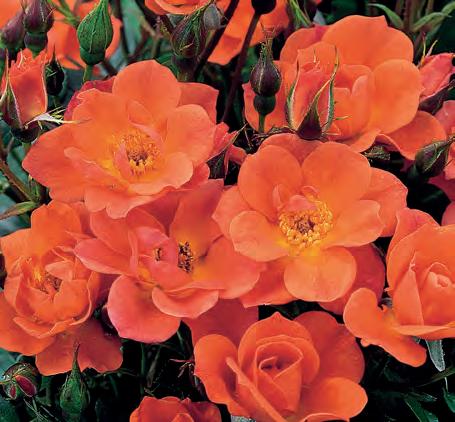
they recognise a difference between particular species and cultivars. Moreover, they know the level of endangerment of these plants in the wild. Even so, everybody could appreciate a mixture of colours and scents produced by trees and shrubs, especially if they are planted on one spot and in a large amount which only double the ‘wow effect’. So, which trumps do gardeners carry in their pocket to get a woodland garden well established and in the style! Plants, of course, better said a range of carefully selected plants. Inspired by romanticism, most of the English rose gardens established in 19th century have been laid out in an old fashioned way. The popularity of roses has declined since then, but never the less, roses are still used in many different ways. Having climbers and ramblers planted near the conifers that act as the natural supporters is not a new approach, but more and more popular in woodland gardens. A giant Rosa ‘Paul’s Himalayan Musk’ can easily reach 8 m and because it loves partial shade, it’s one of the favourite cultivars that is often used in woodland gardens, even though the perfume is not the strongest one. A white-flowering R. ‘Rambling Rector’ is an excellent variety for woodlands. R. ‘Madame Alfred Carriere’ is hardy climber able to survive very well in north-facing sites. The climbing form of R. ‘Cecile Brunner’ is a good choice for sites with old trees, but also for its repeat flowering over late summer. A rambler R. ‘Kiftsgate’ produces a cascade of small white flowers and again, this rosa is popular amongst the gardeners for its ability to grow and cover the trees. R.’Summer Wine’ could be the right choice in case that the soil conditions are not ideal. Among the other varieties, suitable to use in woodland gardens are R.’Lavinia’, R.’Paul’s Scarlet Climber’ or R.’Warm Welcome’. Sun usually enhances the scent of flowers and if planted by the hand of an expert, the roses will flower one after another, they will fit in the area by a shape and colour of the leaf foliage and their final size will correspond with the surrounding. Woodland gardens are highly attractive in spring but especially in a late summer, native woodland area could be quite monotone with nothing much to show. This is the reason why there is always the intention to find more plants for a summer colour that would boost the attractiveness of a site. Wildlife flowers, British orchids, various types of honeysuckles and clematis as well as roses and lilies are possibly the most valuable plants regards the colour spectrum. Lilies are often grown in pots but this rule can be easily broken, as some of the varieties can be planted directly in the ground. A various flowering time of the lily varieties helps to elongate the overall flowering period. Lilium speciosum grows well in shady damp sites while Lilium pyrenaicum prefers full sun. Lilium superbum is an acid-loving species suitable for woodland areas as well as Lilium lankongense, a hardy robust species from China. Lilium henryii, the orange flowering lily is a parent of many hybrids. The ordinary martagon lilies are superb plants for naturalising the gardens and many hybrids are available.
Evenley Wood Garden, Evenley, Northamptonshire. NN13 5SH. www.evenleywoodgarden.co.uk

Roses and lilies worth travelling to see
Woodland gardens with a great rose collections:
Anthony Woodland Gardens in Cornwall RHS Hyde Hall in Essex Dorothy Clive Woodland Garden in Staffordshire
Gardens that are successful in growing lilies outside, despite the fear of lily beetle include:
Evenley Wood Garden in Northamptonshire, Fullers Mill Garden in Suffolk and RHS Wisley Garden

ASK OUR EXPERTS
ANY QUESTIONS? Our Country Gardener experts can solve your gardening problems
Andrew Midgley and Gill Heavens two of our popular experts help with out more of your gardening questions.If you have a question for any of our panel then let us know via email at alan@countrygardener.co.uk or by writing to us a Country Gardener c/o Mount House, Halse, Taunton Somerset TA4 3AD
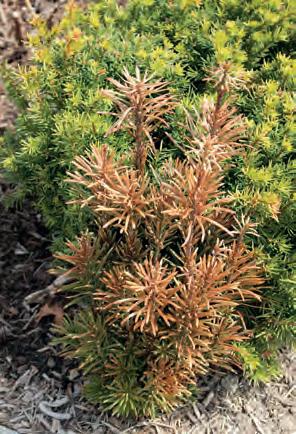
Q. I am fi nding it very diffi cult to grow plants on a bank buttercup yellow Sternbergia lutea some brightness in autumn. that is in full sun where the soil dries out very quickly. As you can see there is plenty to choose from, and I could go I’ve tried a number of things but nothing seems to last on, and on! Choose carefully and soon you will have a sunny very long. Can someone suggest some suitable plants? bank full of colour and year round interest. A. One of my favourite gardening mantras is “right plant, Gill Heavens right place”. This seemingly obvious horticultural approach is most famously championed by Beth Chatto in her fabulous Essex garden. The Beth Chatto Garden boasts extremely dry and very wet areas, both of which are superbly planted and extremely successful. In short, if you select plants that naturally enjoy the same conditions that you have on offer, you should have few problems. With a little bit of research you will fi nd plenty of plants whose natural habitat is just what you have, a sunny slope. Q. We are having trouble with a six year old two metre high taxus baccata hedge. We planted 150 plants in double rows with two foot between plants and 2ft between rows. The hedges are now about two feet wide but over the past few years we have lost about twenty plants which fi rst showed bronzing and then a drying of the foliage. We have been careful to keep the plants watered but not drowned. Is this a virus and what action
do we need to take?
A. I love yew hedges and as it happens I have planted a few hedges over the years when I worked for the National Trust. Yews do not like to be
Helianthemum Ben Fhada – or the rock rose will thrive in sunny conditions water logged or be planted in poor soil with inadequate Speaking from experience, gardening on a slope is diffi cult for the gardener as well. Just keeping upright and not falling on any of your prized specimens is hard enough, let alone doing any work. So I would suggest something that I rarely advise, in part for fear of putting myself out of a job, choose low maintenance plants. Osteospermums will adore being placed here and will make a carpet of colour with little or any maintenance. Select the hardier O. jucundum or O. ecklonis and their cultivars, which come in a range of colours. The rock rose, helianthemum will also thrive here, available in many vibrant hues with the tough grey-green leaves typical of sun lovers. This delicate but tough plant will grow to a maximum of 30cm in height. It will sprawl over the soil catching every available ray and sharing its many blooms. For a larger shrub try one of the cistus, also known as rock rose, which come in a variety of pinks, purples and whites, often blotched centrally with a dark thumb print. Rhizomatous iris love having a good summer roasting and will make good spot plants across the area. Try some grasses for texture, Festuca ‘Elijah Blue’ will associate well with Lithodora diffusa ‘Heavenly Blue’ which will produce a cascade of azure fl owers from late spring to late summer. Alliums will provide early summer interest and the drainage and the bronze colouring is a possible indicator of stress due to aforementioned water logging. It’s important to give your yew hedge some blood, fi sh and bone or Growmore on an annual basis. Simply scatter the granules and lightly fork in and water well. I would also apply a layer of mulch (2 to 3 inches depth) of composted garden leaves annually to help suppress the weeds and to retain soil moisture and to keep the roots cool. You say you don’t ‘drown them’ but after two years they should have their roots fi rmly in the ground and therefore watering shouldn’t be needed particularly if you apply an annual layer of mulch. My advice is to ease off the watering and carry out what I think you should do as above. Hopefully next year you will see a different in your hedge. Only then I would think about buying replacement yew hedges and only then from a reputable tree nursery from the UK. What’s the problem with my taxus baccata hedge?
Andrew Midgley
24 Country Gardener

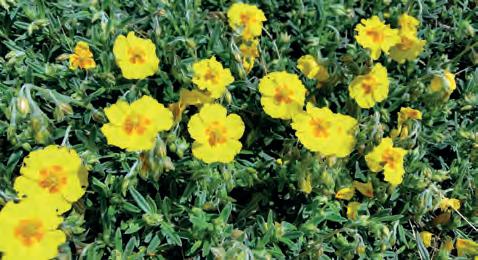


Q. My wife has asked me if we could plant a chamomile lawn. While the idea sounds quite appealing I am not sure where to start and I wonder if it will be worth it. Some advice please?
A. The fi rst thing you need to establish is that the ‘lawn’ must be in a sunny place with free draining soil. If you are on clay then that’s your ‘get out clause’! It goes without saying that the intended area must be thoroughly weeded and forked over before planting the chamomile. The more plants you buy to plant closer the quicker the chamomile
these parts off and burn them and the plants go on to fl ower beautifully - with no further trouble. However, I lose several of the

Aconite damage more than likely to be environmental
honest you have me stumped on this one. I have scoured books, the internet, and asked the opinion of well-educated
Chamomile lawn - spectacular but needs the sunshine and not hard wearing folk. Everyone agrees that disease is rare in these plants. So with a little horticultural sleuthing , it seems to me that the problem is environmental. Early fl owering Aconitum will knit together. After planting, you should not walk on it at all for at least six months, preferably a year except to carefully weed out any pernicious weeds. The disadvantages of this particular type if lawn is that it is not hard wearing so would be no good if the lawn is heavily used but the advantage of it is that it is low maintenance requiring a light mow to take off the fl owers in the summer. Andrew Midgley napellus, the common monkshood, can be in full bloom by May and therefore is doing a lot of its initial growing in early spring. Although a hardy species, the young growth and buds are more vulnerable to icy winds and low temperatures than seasoned foliage. When damage occurs to this immature material they are more susceptible to secondary infections. As the year progresses and the weather warms the remaining buds are unsullied by cold and therefore go on to produce the array of wonderful Q. We have a row of very healthy aconitum or wish for a more defi nitive explanation then the laboratories monkshood plants at the back of our border - well at RHS Wisley may be able to help you out. Their service away from the danger to visitors of accidental contact. is free to members of the Royal Horticultural Society and Every year, the foliage comes up strongly but several of details of where and how to send samples of the affl icted the lead buds turn jet black and slimy, together with plants can be found at www.rhs.org.uk.
some nearby leaf tips. Every year, I carefully pluck Gill Heavens
towers of blue. This theory is the best I can offer but if you
main fl ower buds. Can you tell me what is the cause of this and whether there is any effective treatment? Meet our Experts...A. As you so sensibly point out, great care must be taken when dealing with the undeniably beautiful aconites, otherwise known as monkshood. As others might not Gill Heavens studied horticulture at Cannington College in Somerset before moving to coastal North Devon. After eight years as a head gardener she has now branched out on her be so well informed, I must fi rst mention own. The Heavenly Gardener can be found being angelic that great care should be taken when in a variety of local gardens. Read about her adventures at handling these herbaceous perennials. The offtheedgegardening.wordpress.com reason for caution is because they are extremely toxic. This sinister fact should Andrew Midgley worked for the National Trust for 17 years not however prevent us from growing this and was recently Garden Manager for the National Trust wonderful plant in our gardens, just be gardens for Coleton Fishacre, Greenway and Compton careful, forewarned is forearmed! To be Castle. He is now running a gardening business in the Newton Abbot area. www.countrygardener.co.uk 25
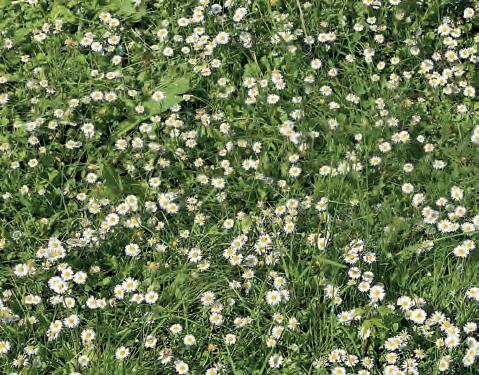


THE SKY’S THE LIMIT!

If you are short of space to grow your own then there are some excellent vegetables which grow well vertically in pots or in open ground
Even lettuces can be trained to grow spectacularly


When space is tight and when, as a keen kitchen gardener, you've simply run out of space there's only one option left – head skywards! Given the burgeoning popularity of container gardening, it's evident that garden sizes are steadily shrinking. Vertical growing is the ultimate technique for bijou gardens that makes use of the one dimension that there's plenty of; in this instance the sky really is the limit! Vertical vegetable growing has come of age over the past few years, with many offthe-shelf contraptions helping space-strapped gardeners get the most from their plot. The Vertical growing cucumber and melons really clever ones can turn a bland garden wall into a fresh fl ush of salads, herbs and fruit. Meanwhile there's all manner of climbing vegetables that can be tied into position which will help you to boost productivity from the smallest of areas. Climbing vegetables such as the ubiquitous runner beans have long been grown up canes and wigwams providing height and interest as well as a productive harvest but there are many more options for ‘vertical veg’ than just familiar peas and beans. Plants’ such as tomatoes and aubergines grow neatly and brilliantly up simple bamboo canes while new introductions of mini cucumbers and pumpkins will cheerfully ramble their way up whatever support you give them. New selections of traditionally large vegetable plants such as courgettes that usually scramble along a plot and take up a lot of room have been bred to climb and cling to supports. Plants also get more light giving them the freedom and room to climb and scramble; this helps to avoid problems caused by poor air circulation and fungal problems such as mildew. Vulnerable plants are also out of the way of slugs giving higher yields and better harvests.
Choosing the site
A south-facing wall will receive the full heat of summer sun for most of the day, which has both benefi ts and limitations. Walls that are southwest and west-facing will also be suitable for container vegetable growing.
